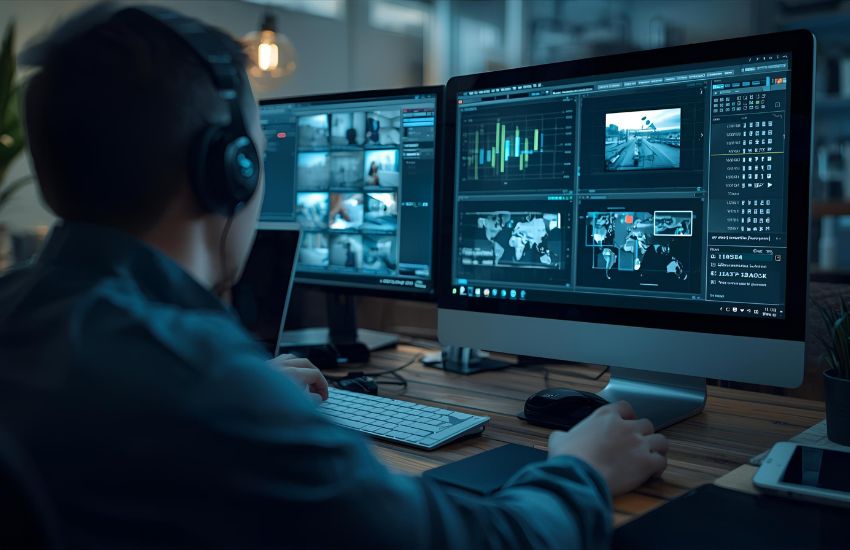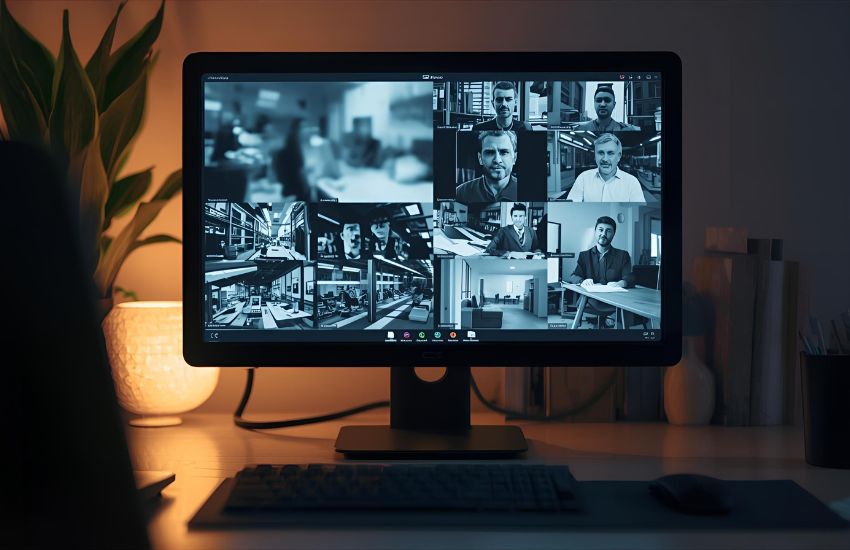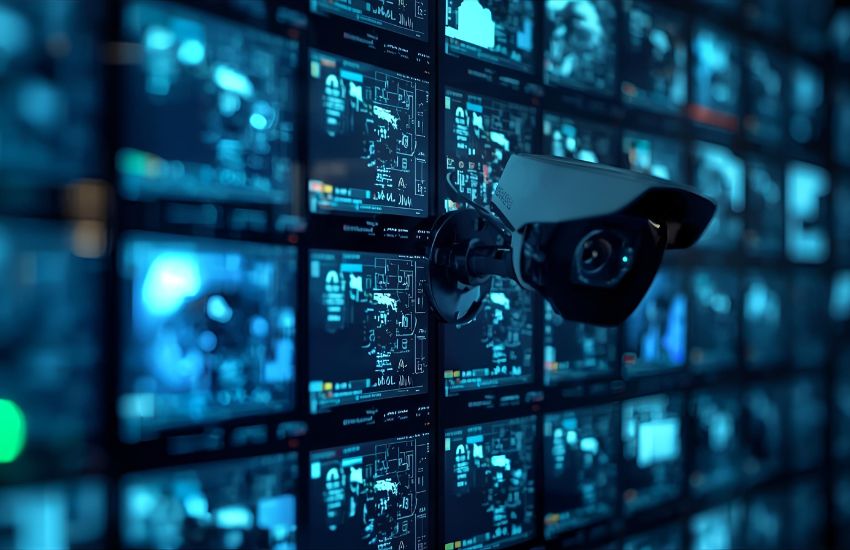A reliable monitor is more than just a screen—it’s the foundation of an effective surveillance system that demands precision and clarity. When you invest in a high-quality monitor, you ensure that every detail captured by your cameras is displayed accurately, allowing for timely responses and informed decisions. Especially in modern setups, where dual monitor configurations and advanced display settings are common, the right monitor setup can significantly enhance your ability to monitor multiple feeds simultaneously.
A reliable monitor is essential for innovative and modern surveillance solutions, providing clear, high-resolution visuals that enable quick and accurate decision-making. It ensures seamless display of multiple camera feeds without lag or compatibility issues, enhancing overall system performance. This reliability boosts security effectiveness and supports advanced monitoring technologies for comprehensive protection.
Selecting the Right Monitor for Reliable and Modern Surveillance Solutions

Understanding Your PC’s Display Configuration
To optimize your surveillance workspace, you first need to understand your PC’s display configuration. Your computer’s graphics driver plays a crucial role in detecting connected monitors and managing their display resolution. By right-clicking on your desktop, you can access display settings where you can edit and arrange how your screens are used—whether you want to extend your workspace across multiple panels or focus on just one screen.
Choosing the Right Connector for Your Monitor
When connecting your monitor to a PC or workstation, it is important to select the appropriate port and connector type. Common connectors include VGA, DVI, and DisplayPort, each with varying levels of compatibility and display resolution support. DisplayPort is often preferred for modern setups due to its ability to handle higher resolutions and refresh rates, such as 1080p and beyond, ensuring a crisp and clear viewing experience.
Configuring and Detecting Your Monitor Panel
Proper configuration ensures your monitor panel functions at its best. If your PC does not automatically detect the connected monitor, follow the manufacturer’s instruction to manually detect and enable it. This step guarantees that your viewing workspace is fully utilized and that your monitor’s full display resolution is activated, providing the clarity needed for detailed surveillance tasks.
See more about…Video Surveillance from Android & iPhone Mobile App
How to Configure and Set Up a Dual Monitor Display for Enhanced Security Monitoring

Selecting the Right Monitors for Your Setup
When planning to set up dual monitors for security monitoring, selecting the right monitors is crucial. You want screens that offer high resolution and excellent display quality to capture every detail clearly. Consider your workspace and whether you might expand to triple monitor configurations in the future. Choosing monitors with reliable monitor support and compatibility with your PC or laptop ensures a smooth setup and optimal productivity.
Connecting Each Monitor and Choosing the Best Connection Type
To connect each monitor, you must identify the appropriate connection type supported by your devices, such as HDMI, DisplayPort, or VGA. If you’re using a laptop, ensure it supports multiple monitors and has the necessary ports or consider using docking stations. Proper connections allow you to maximize display quality and stability, which are essential for continuous security monitoring.
Configuring Your Dual Monitor Display for Maximum Efficiency
Once connected, configuring the dual monitor setup enhances your monitoring capability. Designate your primary monitor or main display where critical feeds appear. Adjust display settings to extend your workspace across two screens, allowing you to run multiple monitoring applications side by side. This setup not only boosts productivity but also offers a more comprehensive overview, especially when using AMD or Nvidia graphics cards optimized for multi-display environments.
By following these steps, you ensure your dual monitor setup is both functional and efficient, elevating your security monitoring to a professional level.
See more about…HDMI over Ethernet Monitor
Optimizing Monitor Settings and Resolution to Support Multiple Monitors on Your Desktop or Laptop

Optimizing your monitor settings and resolution is essential to support multiple monitors effectively on your desktop or laptop, especially if you need to multitask or work long hours. To streamline your workflow, begin by accessing the control panel to adjust display preferences, ensuring clarity and color accuracy across both screens. Using the right connection, such as USB-C, can help maintain signal quality and reduce cable clutter, while analog cords may limit resolution and refresh rates.
When you optimize your setup, consider the ideal resolution and refresh rate supported by your graphics card using either integrated or dedicated hardware. For example, enabling a 4K resolution or a high refresh rate can provide an immersive experience for gamers or professionals working with spreadsheets and coding environments. Configuring your displays to behave like one large screen can also enhance productivity, allowing your mouse to move seamlessly across both screens.
Following best practices in display settings not only improves visual clarity but also helps reduce eye strain, which is vital when you spend extended periods in front of your monitors. By taking these steps to optimize your multi-monitor setup, you can create a more efficient, comfortable, and visually precise workspace that meets your professional demands.
See more about…Security Camera with Monitor
Conclusion
Optimizing your multi-monitor setup is essential for creating a seamless and efficient workspace, especially if you are a programmer or someone who requires precise visual performance. Addressing compatibility issues between your hardware and operating systems like macOS helps prevent disruptions and ensures smooth operation. Minimizing low response times further enhances your viewing experience, reducing lag and improving overall productivity. By carefully configuring your monitors, you can enjoy clear visuals and a streamlined workflow that supports your professional needs.
See more about...Security Camera Remote Monitoring
Frequently Asked Questions (How a Reliable Monitor Enhances Innovative and Modern Surveillance Solutions)
How do computers contribute to improving security and surveillance?
Computers contribute to improving security and surveillance by enabling advanced data processing, real-time monitoring, and automated analysis of video feeds. They support technologies like facial recognition, motion detection, and license plate recognition, which enhance threat detection and response. Additionally, computers store, manage, and secure surveillance data, making it easier for authorities to investigate incidents and maintain safety.
What does a surveillance monitor do?
A surveillance monitor displays live or recorded video footage from security cameras, allowing operators to observe activities in real time. It helps in detecting suspicious behavior, preventing crime, and ensuring safety by providing a clear view of monitored areas. Surveillance monitors are essential for security staff to make quick decisions and respond effectively to incidents.
How has the advancement of technology improved the effectiveness of modern surveillance systems?
Advancement of technology has greatly improved modern surveillance systems by introducing high-definition cameras, motion detection, and night vision for clearer monitoring. Integration with artificial intelligence enables real-time analysis, facial recognition, and behavior tracking. Cloud storage and remote access allow instant data retrieval, while automation and smart alerts enhance response time, making surveillance more reliable and effective.
What is monitoring and surveillance?
Monitoring and surveillance involve the continuous observation and tracking of activities, behaviors, or environments to ensure safety, security, and compliance. Monitoring generally refers to watching processes or systems in real time, while surveillance focuses on observing people or areas to detect suspicious actions, prevent risks, or gather evidence for investigation and decision-making.
